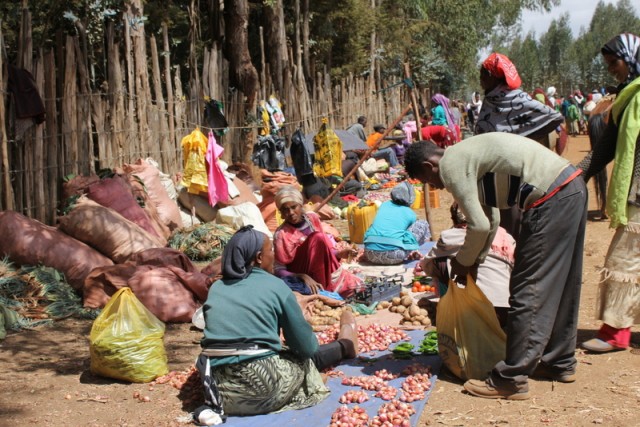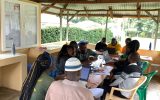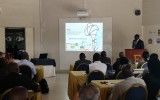
Livelihoods
The main focus of EfD’s work is on livelihoods, the means by which people are able to access and meet their food and non-food needs.
The data collected in studies using the household economy approach (HEA) and the individual household method (IHM) provides quantitative information that can be used to simulate the impact of shocks or changes on livelihoods in a study area. IHM studies can be used at the programme design stage, and to monitor and evaluate the impacts of programmes on different population groups and sub-groups (such as female-headed, landless or labour-poor households).
The Sustainable Livelihoods Framework
The DfID sustainable livelihoods framework (SLF) is perhaps the most well-known and widely used of the various analytical frameworks that have been developed for analysing livelihoods in developing countries. The SLF identifies five key assets on which rural livelihoods are built – human capital, natural capital, financial capital, social capital and physical capital – and locates these in their social and political context (‘transforming structures and processes’).
The SLF also includes the concepts of seasonality and vulnerability to shocks and other changes. The SLF provides a structure for understanding an economy and ensures that the information obtained is in a sense complete: it can potentially include all the information required to understand how an economy works. The SLF is useful at a conceptual level, but its main operational limitation is that the information obtained is qualitative, with little quantitative dimension.
Household Economy Approach and Individual Household Method
The data collected in studies using the household economy approach (HEA) and the individual household method (IHM) is consistent with and complementary to the sustainable livelihoods framework, providing quantitative information that can be used to simulate the impact of shocks or changes on livelihoods in a study area. IHM studies can also be used at the programme design stage, and to monitor and evaluate the impacts of programmes on different population groups and sub-groups (such as female-headed, landless or labour-poor households).
HEA and IHM datasets include measures of households’:
- human capital: the amount of labour available and its quality, and the number of children in education;
- natural capital: land;
- financial capital: remittances, savings, food stocks, credit or loans, and transfers of cash or food;
- social capital: indirect evidence of this from knowledge of the relationships between households and the value of transfers between them, abilities to meet locally-required costs, membership of agricultural and other associations, and the economic and political context;
- physical capital: housing, livestock, tools and other productive assets.
The HEA and the IHM also provide data on livelihood strategies (the different ways in which households employ their assets, and the different amounts of income obtained) and a measure of outcome: the ‘standard of living’ which households reach.
In HEA and IHM studies, household income data is classified according to its source: crops, employment (including self-employment), livestock products, wild foods, and transfers from both formal and informal sources. Income from any of these sources can be in the form of food or cash.
The household economy approach (HEA) provides macro-level data on the livelihoods of typical households from each distinct wealth group within a rural ‘livelihood zone’, a large area with relatively homogenous land use, climate, rainfall, key markets and other economic aspects. This information allows policy makers to simulate the impacts of economic and other shocks or changes on access to food and basic non-food needs, helping to identify, monitor and support the vulnerable groups of people likely to be most in need of assistance.
The individual household method (IHM) looks in far greater detail at individual households’ economies, providing more nuanced data about the different income-generating activities, assets, demographics, needs and other chosen characteristics of actual households. This enables better programme design, targeting, monitoring and evaluation as well as more academic research on a wide range of issues.
Contact us to further discuss how household economy approaches might assist your organisation’s livelihoods work.
Our latest livelihoods studies and blogs
-
New insights from latest EfD / Nasio Trust IHM study in Kenya
The main focus of EfD’s work is on livelihoods, the means by which people are able to access and meet their food and non-food needs. The data collected in studies using the household economy approach (HEA) and the individual household method (IHM) provides quantitative information that can be used to simulate the impact of shocks […]
-
Measuring poverty and livelihoods with The Nasio Trust: A baseline village study in Kakamega County, Kenya (2024)
The main focus of EfD’s work is on livelihoods, the means by which people are able to access and meet their food and non-food needs. The data collected in studies using the household economy approach (HEA) and the individual household method (IHM) provides quantitative information that can be used to simulate the impact of shocks […]
-
Integrating hydro-climate science into policy decisions for climate-resilient infrastructure and livelihoods in East Africa
The main focus of EfD’s work is on livelihoods, the means by which people are able to access and meet their food and non-food needs. The data collected in studies using the household economy approach (HEA) and the individual household method (IHM) provides quantitative information that can be used to simulate the impact of shocks […]


